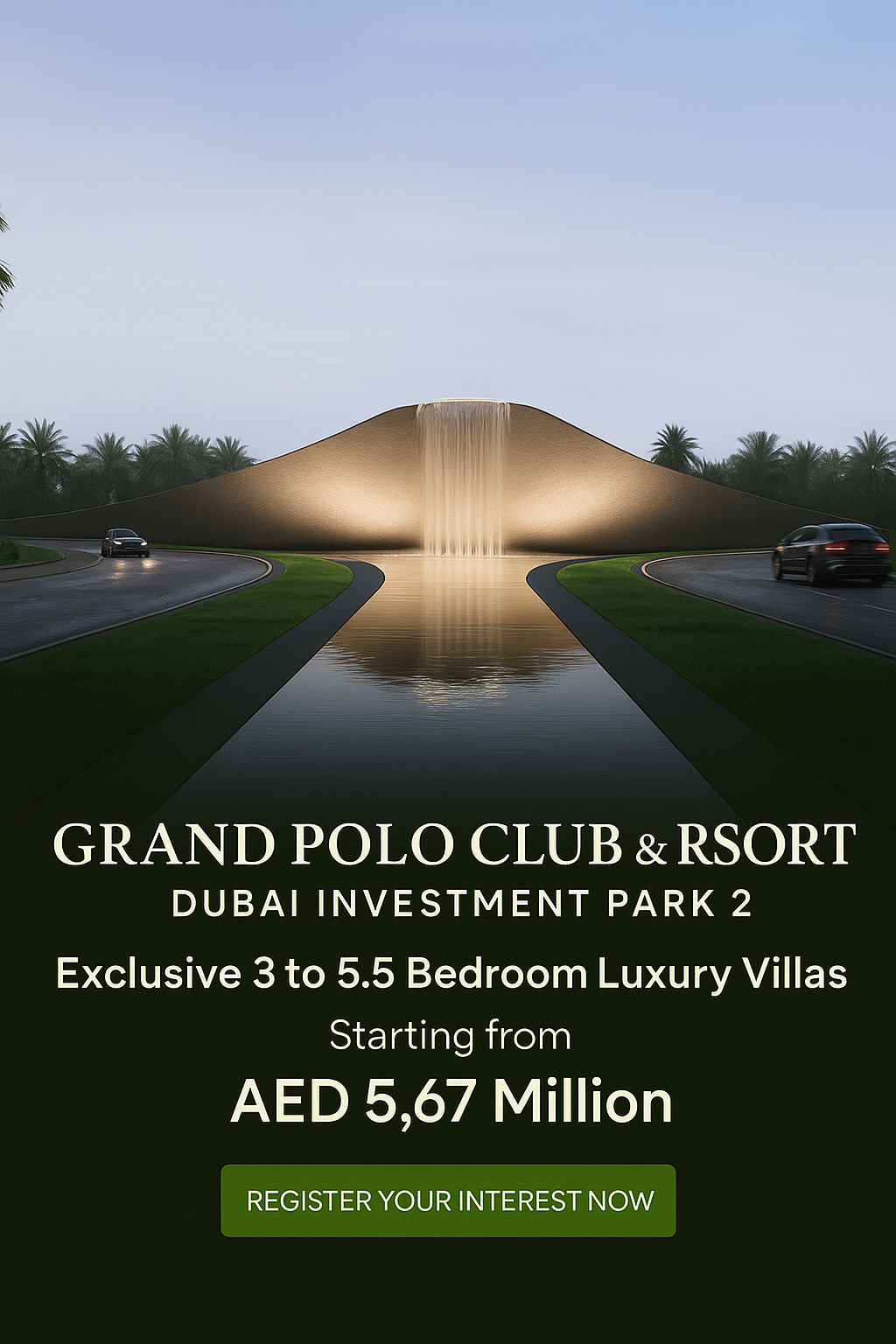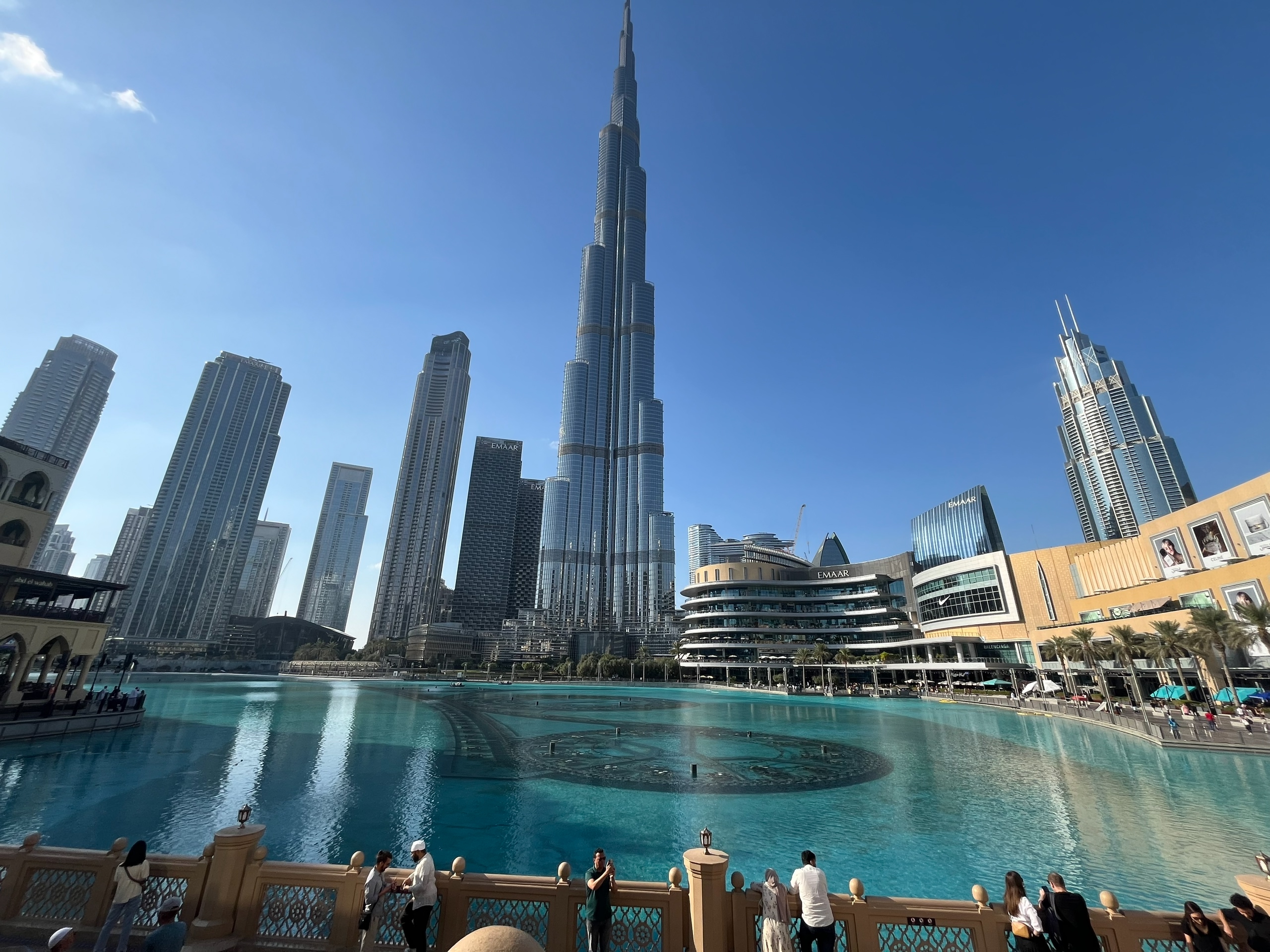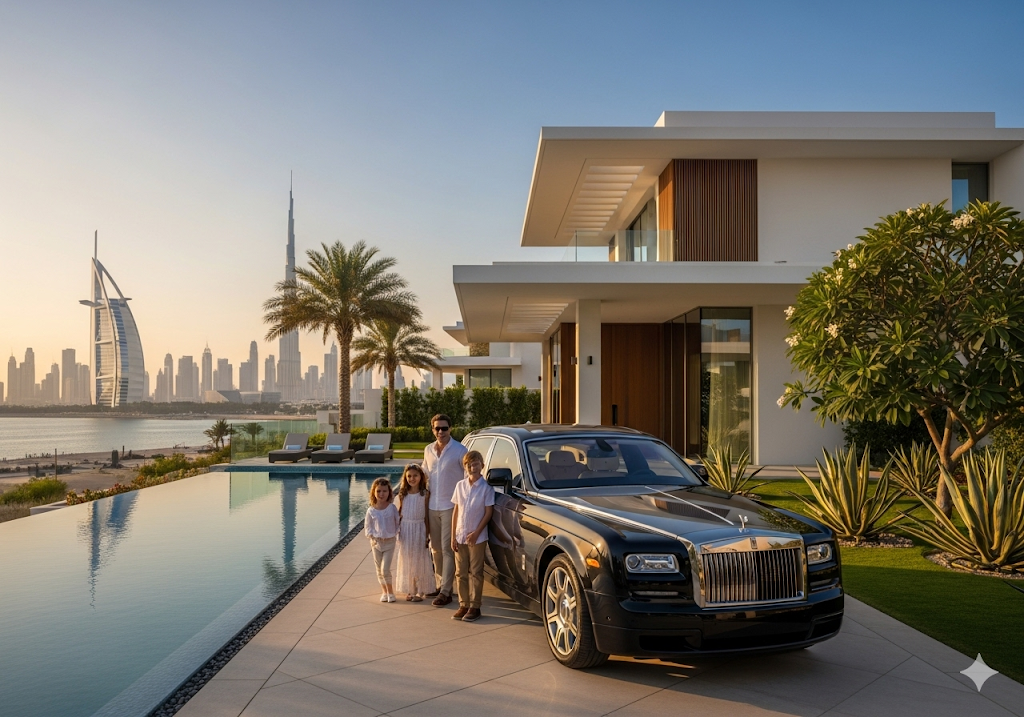How Dubai's Infrastructure Impact on Property Value Shapes Investment Trends
In real estate, infrastructure impact refers to the influence of physical and organizational structures—such as transportation networks, utilities, and communication systems—on property values. These components form the foundation of Dubai which has rapidly transitioned from desert outpost to a global urban marvel.
The Dubai infrastructure impact on property value is undeniable, shaping where people live, how they move, and where investors put their money. With consistent appreciation trends seen in infrastructure-led zones, understanding this impact is crucial for informed decisions.
This blog explores how transportation networks, mega-projects, lifestyle infrastructure, and smart technologies influence property values and emerging Dubai real estate market trends.
How Does the Dubai Infrastructure Impact Property Value in Key Areas?
In real estate, infrastructure impact is the measurable influence of physical frameworks—roads, airports, ports, utilities, and tech infrastructure—on property demand and pricing.
Let’s consider a few examples
Dubai South witnessed an average 18% price hike since the development of Al Maktoum International Airport and the Expo 2020 site.
Dubai Marina grew as a high-value residential destination due to waterfront infrastructure, digital connectivity, and tourism integration.
Downtown Dubai benefited from road enhancements and metro connectivity, pushing prices above AED 2,100 per sqft.
Such examples reflect strong property value appreciation in Dubai tied to infrastructure-linked areas. Whether buying for residence or investment, these zones show faster returns and sustained demand.
What Is the Role of Transport Infrastructure in Shaping Property Demand?
One of the most transformative Dubai infrastructure impacts propertymarkets is transportation infrastructure. The Dubai Metro, strategic roadways, and pedestrian upgrades enhance connectivity across major hubs.
Key Benefits of Transport Dubai Infrastructure Impact Property
Enhanced Accessibility Boosts Property Appeal
Properties located near transport corridors—especially metro stations—are inherently more attractive to both buyers and renters. Improved mobility reduces commute times and supports the daily convenience that modern residents demand, especially in areas like Downtown Dubai and Business Bay.
Rise in Property Values around Metro Zones
There is a clear correlation between metro connectivity and property price premiums. Studies show that areas within walking distance of metro stations, such as Al Furjan and Discovery Gardens, have experienced a 20–30% increase in capital value post-infrastructure development.
Higher Rental Yields in Well-Connected Communities
Landlords benefit from greater rental income in zones served by the Dubai Metro or upgraded road networks. Tenants are willing to pay more for the convenience of direct access to public transportation, boosting ROI for investors.
Retail and Commercial Real Estate Gains
Retail units near transport hubs report higher footfall and stronger tenant demand. Transport-linked commercial areas, particularly in mixed-use developments like Dubai Marina and JLT, enjoy sustained leasing interest due to increased customer accessibility.
Government Initiatives Encourage Transit-Oriented Growth
Dubai’s Roads and Transport Authority (RTA) continues to invest in connectivity. Projects like the Route 2020 Metro extension align with zoning strategies that increase the desirability and livability of adjacent areas, cementing Dubai transport connectivity and property prices as intertwined metrics.
Top Transit-Oriented Zones
Area | Transport Features | Avg ROI (2024) |
|---|---|---|
Metro Red Line Extension | 7.1% | |
New road links and feeder buses | 6.5% | |
Direct metro access, walkable layout | 6.8% |
The Dubai transport infrastructure property value correlation continues to evolve as RTA and the government prioritize expansion.
How Are Mega Infrastructure Projects Influencing Long-Term Real Estate Growth?
Unlike short-term trends, mega-projects shape long-term trajectories. Dubai’s large-scale projects, such as Dubai Creek Harbour, Mohammed Bin Rashid City, and the Expo 2020 legacy district, stand as cornerstones of planned urban growth.
These ventures are reinforced by the Dubai 2040 Master Plan, which outlines a roadmap for sustainable population growth, green space integration, and multi-use zones.
Developers and institutional investors are particularly drawn to these mega-projects due to their:
Proximity to transport, retail, and education
Integrated zoning for live-work-play communities
Government backing with streamlined approvals
Ultimately, these initiatives represent the fusion of policy, planning, and private capital, all contributing to the nexus between Dubai's infrastructure impact propertyand real estate growth.
How Does Smart Infrastructure Drive Modern Property Value Trends in Dubai?
The concept of smart infrastructure in the Dubai property market encompasses AI-led traffic control, 5 G-powered systems, IoT-enabled residences, and energy-efficient buildings.
The Smart solutions deliver both lifestyle and operational advantages.
Energy Efficiency through Intelligent Systems
Smart infrastructure integrates technologies such as automated lighting, climate control, and solar energy optimization. These systems significantly reduce electricity consumption, leading to lower utility bills for residents and commercial tenants.
Over time, the operational cost savings enhance the property’s desirability and long-term financial appeal. In developments like Sustainable City, such systems have already achieved up to 50% savings in energy usage compared to conventional buildings.
Predictive Maintenance and Asset Longevity
IoT-based building management systems continuously monitor critical infrastructure, such as elevators, HVAC systems, and plumbing, for irregularities. These sensors can predict faults before they become major issues, reducing downtime and costly repairs.
It extends the lifespan of structural components, ensuring smooth operations and preserving asset value, particularly in high-traffic commercial towers.
Enhanced Security and Surveillance Capabilities
Smart security solutions, including AI-powered facial recognition, biometric access, and real-time surveillance analytics, offer a superior layer of safety. For residents, this means greater peace of mind.
For developers and landlords, it ensures regulatory compliance and reduces insurance liabilities, creating a dual advantage.
Seamless Digital Living Experiences
Residents in smart homes can remotely control lighting, temperature, door locks, and appliances via mobile apps. This integration not only simplifies daily routines but also aligns with modern expectations of convenience and personalization.
Properties equipped with such technologies appeal especially to younger, tech-savvy investors.
Sustainable Water and Waste Management
Automated irrigation, greywater recycling, and real-time waste collection monitoring contribute to Dubai’s broader sustainability goals. These systems reduce resource wastage while supporting community health and hygiene.
Such smart utilities are increasingly mandated in new developments under Dubai’s green building regulations, adding both environmental and economic value to properties.
Leading smart hubs include
Dubai Silicon Oasis: Home to tech parks and smart residential enclaves
Sustainable City: A benchmark for zero-emission urban living
DIFC: High-tech commercial zones attracting global fintech tenants
As Dubai builds toward full digitization, these areas are seeing a surge in tech-savvy and international buyers, especially from Europe and Asia.
How Do Lifestyle and Community Facilities Affect Residential Property Value in Dubai?
Beyond physical infrastructure, lifestyle offerings deeply influence property decisions. The Dubai lifestyle infrastructure's effect on real estate can be seen in how families and professionals gravitate toward areas that offer a complete living experience.
Why It Matters
Access to schools, hospitals, parks, and gyms fosters long-term settlement
Community-centric layouts reduce commute times and enhance daily quality of life
Buyers are willing to pay 10–15% more for properties in integrated environments
Top Lifestyle-Oriented Communities
Dubai Hills Estate – Known for its central park, mall, and health clinics
Arabian Ranches – Popular for family-focused facilities and international schooling
Mirdif – Affordable yet robust in terms of urban amenities
Such locations consistently record high occupancy and resale rates, reinforcing the value of community infrastructure in Dubai’s residential zones.
How Is Dubai’s Infrastructure Attracting Off-Plan Property Investors?
With more than 60% of launches being off-plan as of 2024 (DLD report), Dubai continues to attract investors looking to tap into early-stage property developments.
The infrastructure-driven off-plan property appeal in Dubai lies in one promise: future connectivity.
Developers use the upcoming infrastructure in their sales pitches for those interested in off-plan property investment in Dubai.
Metro Expansions in JVC and Dubailand
The planned extension of Dubai Metro into Jumeirah Village Circle (JVC) and Dubailand is a game-changer for these residential hubs. These areas, traditionally reliant on road transport, will soon benefit from direct, high-capacity rail access.
This expansion is expected to significantly reduce travel times and elevate both rental demand and resale value, aligning them more closely with Dubai's core transit-linked zones.
Planned Hospitals and Schools in Dubai South
Dubai South is evolving into a self-contained urban district, with multiple hospitals and international schools currently in advanced planning or early construction phases. These additions will enhance the quality of life and attract families seeking holistic communities, further boosting the area’s reputation as a long-term residential destination.
Community Retail Zones Under Construction
Ongoing retail developments in these emerging zones promise lifestyle convenience and economic vitality.
Once operational, they will not only improve daily amenities for residents but also support job creation and stimulate local property value appreciation.
Risk vs. Reward
Aspect | Risk | Reward |
Project Completion | Delays in infrastructure delivery may postpone handover or impact access. | Early investment secures lower prices with higher post-completion value. |
Market Volatility | Fluctuating demand can affect pricing if infrastructure is delayed. | Strategic locations near future transport, malls, or schools offer long-term appreciation. |
Developer Reliability | Inexperienced or underfunded developers may struggle to execute plans. | Reputed developers aligned with city master plans offer stability and ROI. |
Liquidity | Difficult to exit quickly if demand is speculative or amenities lag. | High-growth zones backed by government projects are easier to resell. |
Investment Horizon | May require a 3–5 year wait for maturity and peak returns. | Capital gains of 15–25% are projected upon infrastructure activation. |
Investors with mid- to long-term strategies find off-plan offerings especially lucrative in Dubai’s infrastructure-backed districts.
How Are Government Policies Enhancing Infrastructure’s Effect on Property Investment?
The impact of Dubai's infrastructure policy and urban development in Dubai impact is structured through cohesive frameworks like;
Smart Dubai 2025 Roadmap
Sustainability Strategy 2030
These policies ensure regulated zoning, environmental resilience, and housing diversity. By controlling land use and setting clear boundaries, Dubai’s government reduces speculative bubbles and improves investor transparency.
Impactful Elements
Defined zones for mixed-use and green developments
Mandatory smart building codes in new districts
Special tax-free investment zones to encourage foreign capital
This legislative backbone sustains investor confidence and pushes forward planned, infrastructure-led urbanism.
Wrapping Up: Why Infrastructure Will Continue to Shape Dubai’s Property Landscape
Dubai’s real estate landscape is inextricably linked to infrastructure development. Whether it’s Dubai infrastructure impact property or the continued rise in residential property demand in Dubai, one thing is clear: infrastructure is central.
Key Takeaways
Dubai Metro real estate impact continues to raise ROI expectations
Smart City Initiatives in Dubai and mega-projects are catalysts for value growth
Government development plans in Dubai make the investment environment predictable and secure
To remain ahead, investors must track not only property launches but also infrastructure pipelines. The Dubai infrastructure impact on property value will be the defining metric of real estate success for years to come.
Feature Properties
You Might Also Like
Stay in the loop Through our newsletter
Get to know about the latest real estate insights.
Popular Searches
Off Plan Projects
Popular Areas
About Us
Popular Searches
Off Plan Projects
Popular Areas
Next Level © 2025 All Right Reserved









